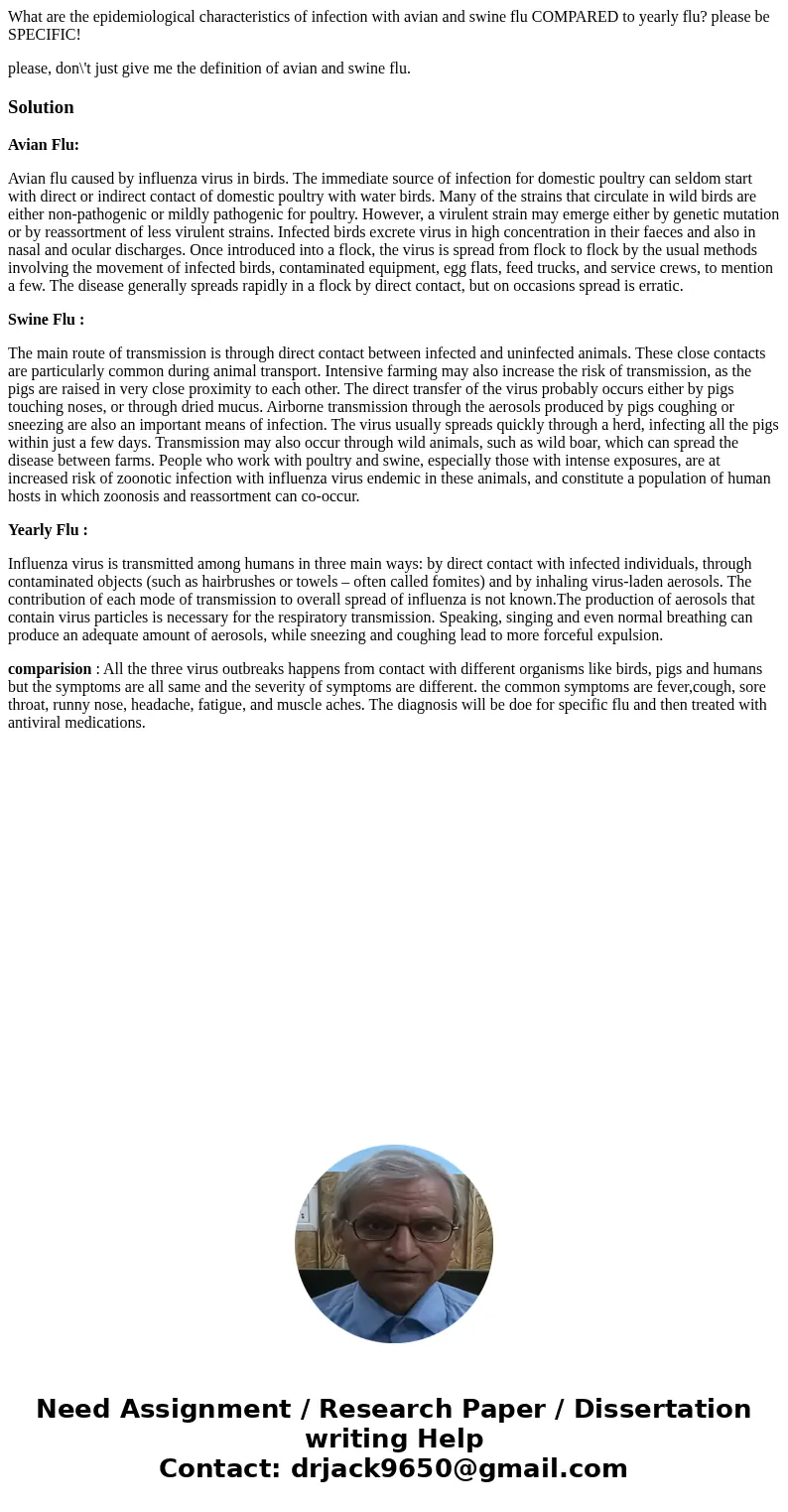What are the epidemiological characteristics of infection wi
What are the epidemiological characteristics of infection with avian and swine flu COMPARED to yearly flu? please be SPECIFIC!
please, don\'t just give me the definition of avian and swine flu.
Solution
Avian Flu:
Avian flu caused by influenza virus in birds. The immediate source of infection for domestic poultry can seldom start with direct or indirect contact of domestic poultry with water birds. Many of the strains that circulate in wild birds are either non-pathogenic or mildly pathogenic for poultry. However, a virulent strain may emerge either by genetic mutation or by reassortment of less virulent strains. Infected birds excrete virus in high concentration in their faeces and also in nasal and ocular discharges. Once introduced into a flock, the virus is spread from flock to flock by the usual methods involving the movement of infected birds, contaminated equipment, egg flats, feed trucks, and service crews, to mention a few. The disease generally spreads rapidly in a flock by direct contact, but on occasions spread is erratic.
Swine Flu :
The main route of transmission is through direct contact between infected and uninfected animals. These close contacts are particularly common during animal transport. Intensive farming may also increase the risk of transmission, as the pigs are raised in very close proximity to each other. The direct transfer of the virus probably occurs either by pigs touching noses, or through dried mucus. Airborne transmission through the aerosols produced by pigs coughing or sneezing are also an important means of infection. The virus usually spreads quickly through a herd, infecting all the pigs within just a few days. Transmission may also occur through wild animals, such as wild boar, which can spread the disease between farms. People who work with poultry and swine, especially those with intense exposures, are at increased risk of zoonotic infection with influenza virus endemic in these animals, and constitute a population of human hosts in which zoonosis and reassortment can co-occur.
Yearly Flu :
Influenza virus is transmitted among humans in three main ways: by direct contact with infected individuals, through contaminated objects (such as hairbrushes or towels – often called fomites) and by inhaling virus-laden aerosols. The contribution of each mode of transmission to overall spread of influenza is not known.The production of aerosols that contain virus particles is necessary for the respiratory transmission. Speaking, singing and even normal breathing can produce an adequate amount of aerosols, while sneezing and coughing lead to more forceful expulsion.
comparision : All the three virus outbreaks happens from contact with different organisms like birds, pigs and humans but the symptoms are all same and the severity of symptoms are different. the common symptoms are fever,cough, sore throat, runny nose, headache, fatigue, and muscle aches. The diagnosis will be doe for specific flu and then treated with antiviral medications.

 Homework Sourse
Homework Sourse